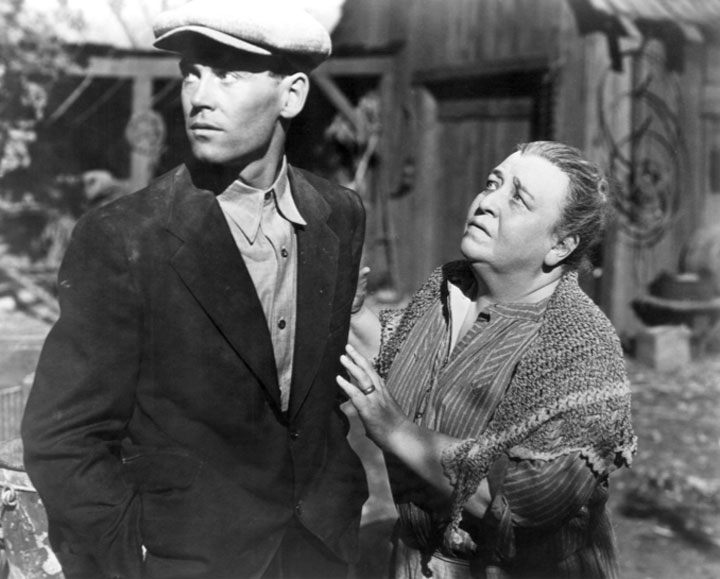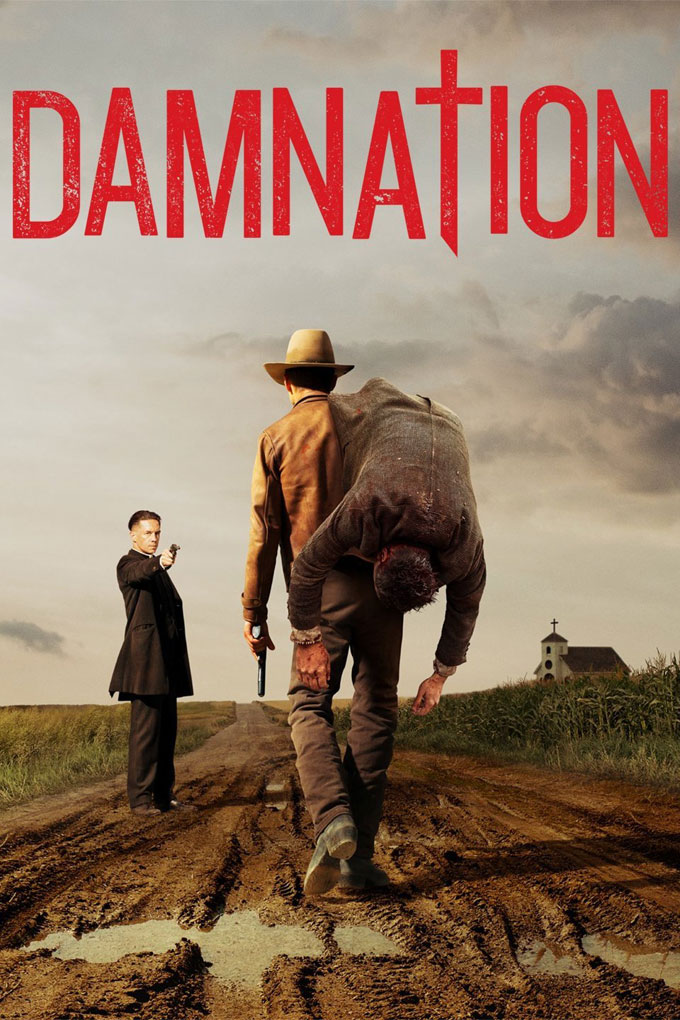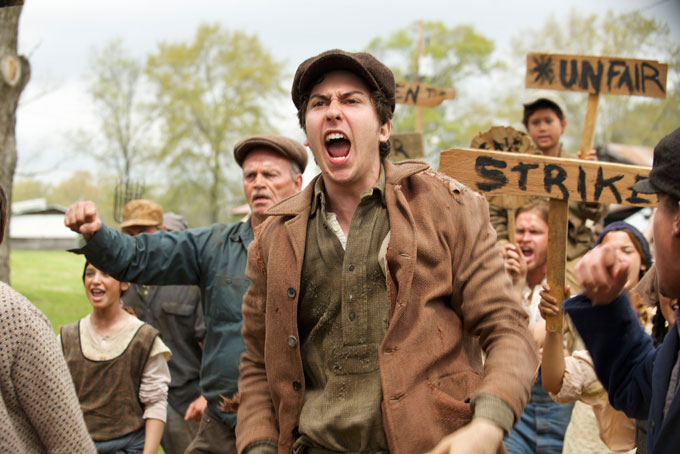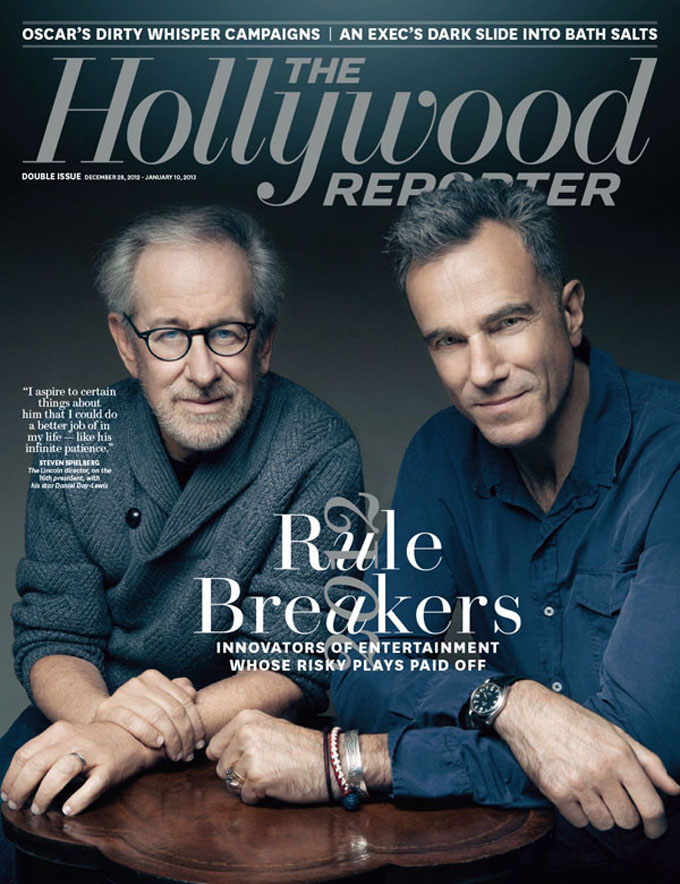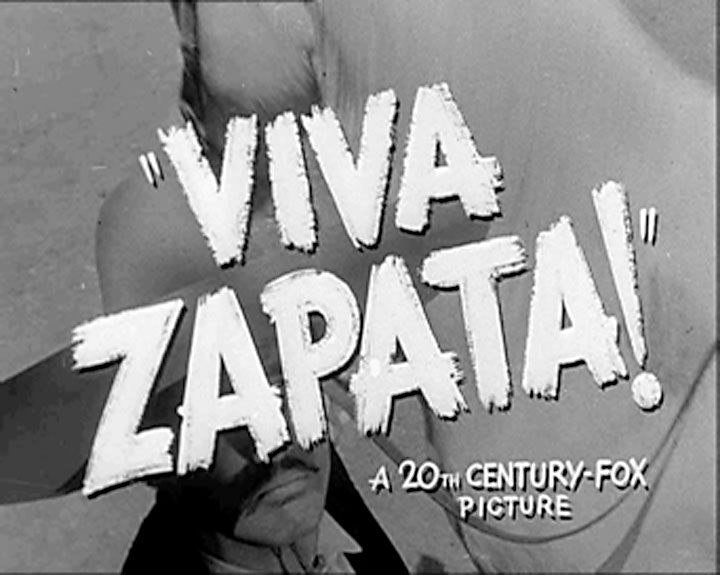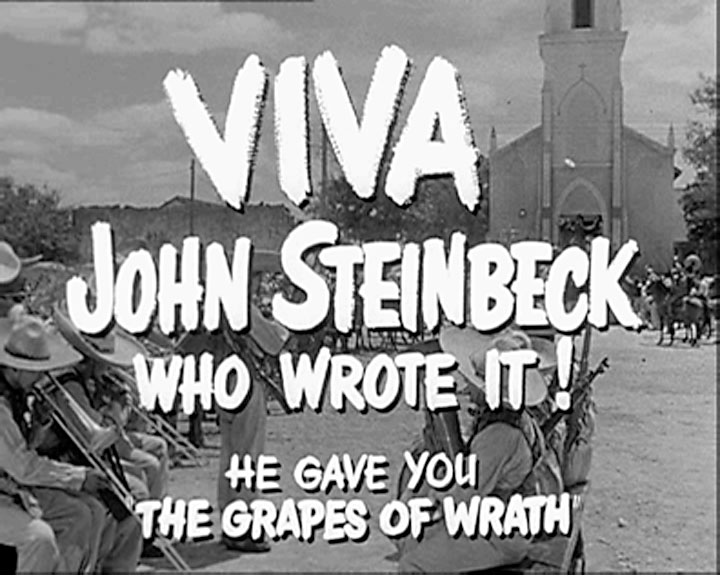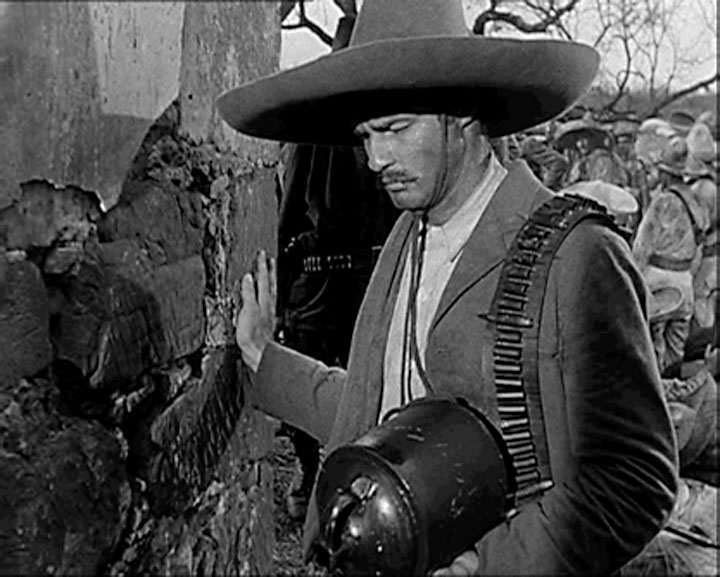Jane Fonda, the actress-activist daughter of John Steinbeck’s friend, the actor Henry Fonda, will receive the 2023 John Steinbeck “In the Souls of the People” Award on September 13 at San Francisco’s Herbst Theatre. The award is made annually by the Martha Heasley Cox Center for Steinbeck Studies at San Jose State University. Previous awardees include Bruce Springsteen, Arthur Miller, and Joan Baez. In a January 27 post—“Even John Steinbeck Thought Henry Fonda Was The Perfect Pick For Grapes Of Wrath”—film writer Jeremy Smith celebrates the performance that helped make Henry Fonda famous, and John Steinbeck’s friend.
Henry Fonda’s Daughter, Jane Fonda, to Receive 2023 John Steinbeck Award
John Steinbeck in Jeopardy?
What does it mean when John Steinbeck is the category but contestants on Jeopardy! don’t know the answers? That was the $64,000 question raised by a recent episode of “America’s favorite quiz show,” hosted since 1984 by Alex Trebek. The quiz show scandals of the 1950s bothered Steinbeck so badly that he used game show rigging as an example of American decline in The Winter of Our Discontent. But the final round questions on December 14, 2017 were about the novels by Steinbeck that had been made into movies, and it was clear from their answers that the contestants on this show hadn’t been coached. All guys and all under 40, they batted their way through sports, food, weather, world facts, and things called David, then stumbled and choked on characters from books by Steinbeck, with slow recall on The Grapes of Wrath and Of Mice and Men and no recall at all of The Red Pony, Cannery Row, or East of Eden. As David Wrobel notes, “it’s a nice confirmation of how deeply embedded Steinbeck is in American culture” when he’s a game show category. It’s less inspiring when the contestants can’t answer the questions. (Skip to 8 in the video to view the final round.)
New USA Network Drama Channels John Steinbeck
The principal writer and executive producer of Damnation, a new dramatic series premiering November 7 on USA Network, has cited John Steinbeck and Dashiell Hammett to describe the show’s depiction of rich vs. poor and brother against brother in rural Iowa during the Great Depression. In an interview with the Cleveland, Ohio Plain Dealer, Tony Tost, the show’s creator, explained that “the world of John Steinbeck as presented in The Grapes of Wrath, Of Mice and Men and Cannery Row was a big influence, as was Dashiell Hammett’s first novel, Red Harvest.” An award-winning poet, essayist, and screenwriter from Springfield, Missouri, Tost earned a PhD in English from Duke University and lives in Los Angeles, where he was a writer and producer for Longmire, a TV Western that ran for five seasons. The new show is “a little tricky to describe,” added Tost, the author of three volumes of poetry and a book of cultural criticism, Johnny Cash’s American Recordings (Continuum 2011). “It’s the Dust Bowl world. It has the feel of a Western. It has the strikebreaking. It has the religious themes. It has the pulp conspiratorial element. I’ve said it’s one part Clint Eastwood, one part John Steinbeck, one part James Ellroy.” The pilot episode will air tomorrow on USA Network at 10 p.m. EST. Damnation can also be viewed on Netflix, the entertainment giant headquartered in Los Gatos, where John Steinbeck wrote Of Mice and Men and The Grapes of Wrath.
In Dubious Battle: A Film Festival Viewer Compares Steinbeck’s Novel and James Franco’s Movie Adaptation
Recently I attended the screening of James Franco’s movie adaptation of In Dubious Battle, Steinbeck’s 1936 strike novel, at the Mill Valley Film Festival in Marin County, California. Franco, who directs and acts in the motion picture, was present for the event, which I believe was the first time In Dubious Battle was screened publicly in this country. In his remarks Franco talked about casting and directing the film, and my general impression was that he believed he was being faithful to the theme of the novel.
As it happened, I was in the process of reading In Dubious Battle for an upcoming book club event in Monterey, California, where I live, and I noted changes in the film that surprised me, and that I felt violated Steinbeck’s intention in writing the novel. This itself is not unusual, since—as Steinbeck learned when Alfred Hitchcock mangled Lifeboat—some directors seem to think they can write a better story than the author. In the course of the Mill Valley Film Festival screening, I made a number of notes for my book club presentation comparing Franco’s movie and Steinbeck’s book.
The action of Chapters 1-4 includes Jim’s introduction to Mac, Joy, and Dick—California labor agitators sympathetic to the Communist Party—and their journey together to the Torgas Valley, the fictitious venue of In Dubious Battle. Although Harry Nilsen, a Communist Party figure, isn’t mentioned in the film, it follows Steinbeck’s story faithfully enough at the start, with one exception.
In James Franco’s treatment, Joe, the father of Lisa’s baby, abandons her when she becomes pregnant; in Steinbeck’s novel, he is still on the scene and appears in a minor role later in the action, in the course of which Lisa politely spurns Jim’s advances. In Franco’s version, Joe has to leave to make room for a romantic relationship: Jim loves Lisa, but chooses the cause over happiness with her. Hollywood always needs a romantic angle, even when that requires altering an author’s story and intent.
Chapters 5-8 in the novel present the development of plans for the strike, showing how Mac and Jim organize the effort and motivate the workers, and how Jim is increasingly radicalized under Mac’s guidance. Steinbeck’s character London, targeted as a leader by the strike organizers, is well cast in James Franco’s film. In Steinbeck’s version, Dan, an elderly apple picker, falls from the tree when the ladder he is using collapses. In the movie, Mac admits breaking the ladder so the workers will get mad and the cause will be advanced. For Mac, Dan is expendable. Unlike other changes made in the film, this one seems in character, and in harmony with Mac’s idea that ends justify means—contrary to what Steinbeck believed.
By contrast, the character of Joy, another expendable worker, is miscast. Steinbeck portrays Joy as a little guy who has been so badly beaten in the past that he may have become unhinged. In the course of a key scene in the novel, Joy is recognized by Mac and Jim while stepping off a train before being shot and killed, presumably by a vigilante sniper. In James Franco’s version, Joy is an old man, and he’s killed by a policeman after delivering a rousing speech—according to Mac, the most worthwhile thing Joy has ever done.
But the biggest negative change in characterization made by the film occurs in the presentation of Doc Burton, a key player who is described in Steinbeck’s novel as a fuzzy-cheeked young man. In James Franco’s version, he’s depicted as an older man and has a minor role. Most of the ideological dialog between Doc, Jim, and Mac—to me, the heart In Dubious Battle—has been eliminated.
In Steinbeck’s original, Mac and Jim make the argument that the strikers’ collective cause is more important than their individual lives and welfare. In response, Steinbeck’s Doc expresses doubt, raising questions about ends justifying means, violence begetting violence, and the dubious outcomes that flow from unexamined motives. This gives the story the skepticism and objectivity I think Steinbeck intended readers to take away from In Dubious Battle. Omitting Doc’s dialog, as James Franco does, robs the title of its point and encourages the viewer to take sides, like the director.
On the other hand, the portrayal of the deal made by the strikers with Anderson, the sympathetic farmer, is true to the novel, as is the interest expressed by the character Al in joining the Communist Party. In Steinbeck’s version, another grower’s house is torched, and Al survives. Here the movie is less clear, leaving me uncertain whether Anderson’s house is torched and Al is actually killed, or the rumor has been concocted to anger and motivate the strikers, like Dan’s death. Omitted entirely is the character of Dakin, the destruction of his truck, and the transfer of strike leadership to London that results.
Franco’s film, like Steinbeck’s novel, shows the strikers’ volatility, their rejection of the growers’ offer to employ London if they go back to work, and the sheriff’s threat to run them off Anderson’s land if they refuse. In the movie the tents where the workers live are white and new, and the breaking through of the barricade becomes a major scene. These changes, presumably made for visual and dramatic effect, don’t violate the spirit of Steinbeck’s story. The changes made in the story’s ending do.
In the novel Doc Burton’s absence is noted when London calls a meeting to decide whether the strikers will stay and fight or to leave, and a boy enters to report that Burton has been found in a ditch. Jim insists on going to Doc and is ambushed and shot. After carrying Jim back to camp, Mac says, “Comrades, he didn’t do anything for himself.” In the film it is Mac who is shot and killed, not Jim, and in a major reversal, it is Mac who becomes a martyr to the cause that Jim will carry on. As in the novel, we don’t know whether the strikers finally decide to fight or flee. Either way, however, they lose—out of a job and blacklisted if they leave; in jeopardy for their lives if they stay. Like the battle for labor rights, their immediate outcome is dubious. Whatever may happen to them personally, it is Mac who has put them a position of increased vulnerability. Absent the dialog written by Steinbeck for Doc Burton earlier in the story, this point is lost on viewers.
Steinbeck favored objectivity where James Franco takes sides, and the film concludes with a summary of pro-labor legislation enacted, supposedly as a result of In Dubious Battle, in the years that followed. To seems likelier to me that The Grapes of Wrath can be credited with influencing laws in favor of labor rights in the aftermath of the Great Depression.
James Franco is to be commended for producing, directing, and acting (as Mac) in this, the first movie adaptation made of In Dubious Battle since it was published 80 years ago. By downplaying Doc Burton and emphasizing Mac, however, Franco has substituted certitude for objectivity about ethics, motives, and outcomes in the long struggle for labor rights. This, to me, is his film’s most serious flaw.
In Dubious Battle Motion Picture by James Franco, Steinbeck Fan, Premieres
 Movie reviews, like book reviews, sometimes influence audience behavior. But as John Steinbeck proved, loyal fans often ignore reviews if they really like an author or an actor. When James Franco’s motion picture adaptation of In Dubious Battle is released in the U.S. later this year, it’s doubtful that fans of Steinbeck or Franco will be affected one way or the other by the breathless reviews and red carpet hoopla In Dubious Battle received at film festivals in September. Reviews were mixed following the movie’s premiere at the Venice Film Festival, but Franco won points for making the first motion picture adaptation of Steinbeck’s 1936 strike novel, and that may be what fans appreciate most when they see the movie for themselves.
Movie reviews, like book reviews, sometimes influence audience behavior. But as John Steinbeck proved, loyal fans often ignore reviews if they really like an author or an actor. When James Franco’s motion picture adaptation of In Dubious Battle is released in the U.S. later this year, it’s doubtful that fans of Steinbeck or Franco will be affected one way or the other by the breathless reviews and red carpet hoopla In Dubious Battle received at film festivals in September. Reviews were mixed following the movie’s premiere at the Venice Film Festival, but Franco won points for making the first motion picture adaptation of Steinbeck’s 1936 strike novel, and that may be what fans appreciate most when they see the movie for themselves.
Reviews were mixed following the movie’s premiere at the Venice Film Festival, but Franco won points for making the first adapatation of Steinbeck’s 1936 strike novel.
Franco reread In Dubious Battle while rehearsing the role of George for the Broadway stage revival of Steinbeck’s 1937 play-novella Of Mice and Men, which has been filmed twice despite being, in Franco’s view, far less suited for the screen than the earlier book. During a press conference at the Deauville Film Festival following Venice, he explained that he decided to make In Dubious Battle now because “as a storyteller [I knew] it would make a great movie” and because its “central conflict had a topical resonance” he felt audiences would understand. That point seemed lost on critics at the Venice Film Festival: some got facts wrong about the novel; others ignored Franco’s intentions and concentrated on his personality and appearance. The response from critics may be more discerning when Franco’s movie opens at the film festival in Toronto, where reviewers won’t have to explain Steinbeck’s story to readers, or the parallels between Steinbeck’s time and today.
Rebel with a Cause: Filming Faulkner and Steinbeck
 Whatever the final verdict on the film, Franco also deserves credit for both directing and acting (as Mac) and for attracting an amazing cast, including Bryan Cranston, Vincent d’Onofrio, Robert Duvall, Ed Harris, Sam Shepard, Selena Gomez, and Natt Wolff. Franco has appeared in dozens of movies, and he’s best known by mainstream moviegoers for playing slapstick characters in Animal House pictures like The Interview. But he has portrayed intelligent characters intelligently in highbrow films and acted and directed in adaptations of novels by Faulkner even harder to film than Steinbeck.
Whatever the final verdict on the film, Franco also deserves credit for both directing and acting (as Mac) and for attracting an amazing cast, including Bryan Cranston, Vincent d’Onofrio, Robert Duvall, Ed Harris, Sam Shepard, Selena Gomez, and Natt Wolff. Franco has appeared in dozens of movies, and he’s best known by mainstream moviegoers for playing slapstick characters in Animal House pictures like The Interview. But he has portrayed intelligent characters intelligently in highbrow films and acted and directed in adaptations of novels by Faulkner even harder to film than Steinbeck.
Whatever the final verdict on the film, Franco also deserves credit for both directing and acting (as Mac), and for attracting an amazing cast.
Like Faulkner, Steinbeck learned his limits when he tried to write for Hollywood, and he preferred to leave the job of adapting to specialists like Franco’s friend Matt Rager, the screenwriter Franco turns to when he makes literary movies, including biopics about authors. In several of these films Franco portrays tormented artistes from Steinbeck’s era—including Hart Crane, James Dean, and Alan Ginsburg—about whom Steinbeck could be critical. Franco grew up in Palo Alto, where Steinbeck went to college, and he writes fiction that appeals to the kind of reader who, unlike Steinbeck, is naturally attracted to Crane, Dean, and Ginsburg.. Like these figures, and like Steinbeck, Franco follows his own drummer as an artist, and his fans—like Steinbeck’s—respond in the same spirit. For American fans, Franco’s independence, courage, and passion for Steinbeck are cause enough to celebrate the making of In Dubious Battle, despite ill-informed movie reviews at foreign film festivals.
Steven Spielberg, Daniel Day-Lewis Grapes of Wrath Motion Picture Off or On?
Steven Spielberg’s motion picture remake of The Grapes of Wrath with Daniel Day-Lewis may finally happen if a suit by Waverly Scott Kaffaga, the daughter of John Steinbeck’s widow Elaine, is successful. The legal filing against Steinbeck’s son Thom and others—the latest in a war of litigation among Steinbeck’s various heirs—was reported on April 4, 2016 by the motion-picture news magazine The Hollywood Reporter. According to the report, Universal Studios abandoned plans in 2014 for a motion picture remake of East of Eden because of alleged interference by quarreling heirs, but Steven Spielberg’s interest in remaking The Grapes of Wrath, with Daniel Day-Lewis in a starring role, appears to be the cause of the latest filing by Kaffaga and Steinbeck’s literary agents, MacIntosh and Otis. (James Franco’s interest in making a motion picture adaptation of Tortilla Flat was also mentioned in the piece.) Read The Hollywood Reporter for details, and stay tuned for the next chapter in the ongoing Steinbeck family saga.
James Franco Writes About Motion Picture Adaptation of Steinbeck’s In Dubious Battle
It isn’t surprising that James Franco has made a specialty of John Steinbeck. The 37-year-old actor grew up in Palo Alto, California, where Steinbeck attended college. Following high school, Franco dropped in and out of jobs and trouble—as Steinbeck did at the same age—before majoring in writing at UCLA, studying art at the Rhode Island School of Design, and pursuing a PhD in English at Yale. Like Steinbeck during the Great Depression, Franco is attracted to social causes by personal experience: exposing troubled kids to literature and advocating equal rights for gay people. A prolific writer, he recently blogged about his motion picture adaptation of Steinbeck’s Great Depression novel In Dubious Battle, scheduled for release this year. Franco’s connection to Steinbeck is strong, so the movie should be good.
Only Connect!—James Franco’s Upcoming Film of John Steinbeck’s In Dubious Battle Full of Coincidences
According to Hollywood’s Variety magazine, the actor James Franco and the screenwriter Matt Rager have teamed up to adapt John Steinbeck’s 1936 labor-movement novel In Dubious Battle as a 2015 motion picture featuring Franco and a constellation of interconnected stars. Neglecting Tortilla Flat (1935), Variety incorrectly identified In Dubious Battle as “Steinbeck’s first major work” in its news flash about the film. But casting details corroborated by other sources reveal coincidences and connections to John Steinbeck reminiscent of E.M. Forster’s advice in A Passage to India: “Only connect!”
Casting details reveal coincidences and connections to John Steinbeck reminiscent of E.M. Forster’s advice in A Passage to India: ‘Only connect!’
James Franco grew up in Palo Alto, California, where John Steinbeck attended Stanford University in the early 1920s. As a PhD student at Yale, Franco met Rager, a former English teacher, and the pair went on to collaborate in film adaptations of two novels by William Faulkner—As I Lay Dying (2013) and The Sound and the Fury (2014). Franco starred in both movies; each featured another young actor, Danny McBride, who will appear in Franco and Rager’s adaptation of In Dubious Battle. The comedian Seth Rogen—James Franco’s co-star in the controversial 2014 flick The Interview—appeared with Franco in The Sound and the Fury and portrays Steve Wozniak in the upcoming Silicon Valley bio-pic, Steve Jobs. Coincidentally, the real Steve Wozniak lives in Los Gatos, the upscale town where John Steinbeck wrote his labor-movement masterpiece, The Grapes of Wrath, in 1938.
James Franco grew up in Palo Alto, California, where John Steinbeck attended Stanford University in the early 1920s.
In another Steinbeck connection, James Franco played George Milton in the recent stage revival of Steinbeck’s 1937 novella-drama Of Mice and Men. The 1938 Broadway production of the labor-movement play, directed by George S. Kaufman, won the New York Drama Critics’ Circle Best Play Award. The 1939 film version, directed by Lewis Milestone, featured Lon Cheney as Lenny and Burgess Meredith as George, the role that helped make Meredith famous. It also introduced Meredith to Steinbeck, and they became close friends. Six years later Meredith starred as the legendary reporter Ernie Pyle—another friend of John Steinbeck—in the World War II bio-pic, The Story of G.I. Joe.
In another Steinbeck connection, Franco played George Milton in the recent stage revival of Steinbeck’s 1937 novella-drama.
A 35-year-old actor named Henry Fonda also became Steinbeck’s friend following the Fonda’s break-out performance as Tom Joad in John Ford’s 1940 film adaptation of The Grapes of Wrath. Like John Steinbeck, Burgess Meredith, and James Franco, Fonda was a political liberal with progressive social views. Like Meredith, he visited Steinbeck in Los Gatos, a 20-minute drive from Franco’s hometown of Palo Alto. Hollywood sources reported that Steven Spielberg had plans to produce and direct a remake of The Grapes of Wrath. If he doesn’t, James Franco might. The 37-year-old clearly connects with John Steinbeck. E.M. Forster, who appreciated the importance of such empathy, would approve.
Viva Zapata!—Steinbeck, Motion Pictures, and the Mexican Revolution
Unlike other famous authors of his generation such as Faulkner, Fitzgerald, and Hemingway, John Steinbeck experienced more success than failure in motion picture adaptations of his fiction while he was alive. Uniquely among American writers who worked in Hollywood during the first half of the 20th century, he also found creating original scripts for motion pictures a productive vehicle for his social message and artistic vision, as well as a useful outlet for personal issues when needed. The 1952 film Viva Zapata! starring Marlon Brando as the hero of the recent Mexican Revolution exemplifies these aspects of Steinbeck’s career as a writer.
Working with his friend Elia Kazan—the director of On the Waterfront, also starring Marlon Brando, and the 1955 motion picture adaptation of East of Eden—Steinbeck produced a remarkable screenplay about the Mexican Revolution that explores themes central to his social-protest novels of the 1930s. Like the best of his books, his screen treatment of Emiliano Zapata, the martyred leader of the Mexican Revolution, represents a compelling vision of personal virtue, group corruption, and individual responsibility in a fast-moving narrative that seems fresh today.
Like the best of his books, his screen treatment of Emiliano Zapata, the martyred leader of the Mexican Revolution, seems fresh today.
But Viva Zapata! is also the story of a rebel with a divided conscience, conflicted and confused, whose fame threatens his integrity when he succeeds in his effort. The same could be said of John Steinbeck’s life following The Grapes of Wrath. He feared wealth and celebrity, and when they came they cost him. The Grapes of Wrath was an overnight sensation, both as a Pulitzer Prize-winning book and as an Academy Award-winning motion picture. Like the stage version of Of Mice and Men, it was adapted by others with John Steinbeck’s blessing. Throughout the 1940s, he wrote scripts for Hollywood motion pictures with disappointing results. Viva Zapata! he kept for himself, instigating and overseeing the project and researching the Mexican Revolution with the care of a historian before writing the script.
What made Viva Zapata! so good when other motion pictures produced from stories by John Steinbeck—such as Alfred Hitchcock’s 1944 disaster, Lifeboat—were so bad? Control, commitment, and collaboration were key to the quality of the motion picture Steinbeck wrote, financed, and produced with his trusted colleague Kazan.
Steinbeck’s Motion Pictures: From Adaptation to Original
In his introduction to the 1993 Penguin edition of Viva Zapata!—which includes John Steinbeck’s thoughtful essay on the Mexican Revolution—the scholar Robert Morsberger repeated his judgment, first expressed 20 years earlier, that “[a]mong modern American authors, John Steinbeck has had the greatest success in the movies, both with adaptations of his novels to the screen and as a screenwriter himself.” Adaptations of Of Mice and Men (directed by Lewis Milestone), The Grapes of Wrath (directed by John Ford), and East of Eden (directed, as noted, by Kazan) were major motion pictures appealing to a broad audience. They made John Steinbeck a name recognizable to millions who never read his books.
Less well known is the fact that Steinbeck started his own production company in the period between the first and last of these motion picture hits. Three of his best screenplays–The Pearl (also published as a short novel), The Forgotten Village (1941), and Viva Zapata!–are set in Mexico, a country he loved to visit, with a history that fascinated him, particularly the Mexican Revolution that gave him the idea for Viva Zapata! His script about the conflicted rebel leader Emiliano Zapata is considered by some the best work that he produced in any medium between Cannery Row (1945) and East of Eden (1952), novels based on the author’s life growing up in California.
His script about the conflicted rebel leader is considered by some the best work that he produced in any medium between Cannery Row and East of Eden.
Writing Viva Zapata! reinvigorated John Steinbeck’s interest in collective action and principled martyrdom, the dignity of the poor, and the eternal conflict between the individual and the group—the subjects of his greatest novels of the 1930s and themes addressed in Sea of Cortez, his collaborative account with his friend Ed Ricketts of their 1940 sailing expedition to Mexico. Writing Viva Zapata! also provided an outlet for self-reflection. Like his revolutionary hero, John Steinbeck was a man in crisis and conflict, with others and with himself.
John Steinbeck and Zapata: A Personal Revolution?
Between The Grapes of Wrath and East of Eden, much of John Steinbeck’s energy was devoted to journalism, motion pictures, and plays. While his novels of this period—including, despite its popularity, Cannery Row—irritated critics in New York, he was embraced by Hollywood, where he had friends and, occasionally, lovers. His motion picture projects included some of the biggest names in the industry: John Ford, Hal Roach, Alfred Hitchcock, Elia Kazan, Darryl F. Zanuck, Henry Fonda, Spencer Tracy, Burgess Meredith, James Dean, and Brando. All told, motion pictures based on his writing received 25 Academy Award nominations and produced several winners. Ironically, Steinbeck received an Oscar nomination for best screenwriting for Lifeboat, a motion picture he tried to disown. He was nominated for best original story for another wartime film, A Medal for Benny (1945), and later for writing the story and screenplay of Viva Zapata!
All told, motion pictures based on his writing received 25 Academy Award nominations and produced several winners.
As biographers have noted without elaborating at sufficient length, Steinbeck created his own film production company in the 1940s in partnership with another friend, the colorful war photographer Robert Capa. Like Kazan, Capa was a willing collaborator, and his state-sanctioned trip to the Soviet Union with Steinbeck in 1948 resulted in A Russian Journal, a word-and-picture book. Steinbeck was attracted to common people living far from cities, and part of the book is devoted to daily life in a Ukrainian farming village. The Forgotten Village and Viva Zapata! grew from the same soil: rural folk in damaging conflict with urban culture and corruption. The films also reflect Steinbeck’s interest in documentary motion pictures, particularly the social-protest documentaries—notably The Plow That Broke the Fields (1936)—of Pare Lorentz, another friend and would-be collaborator from John Steinbeck’s most productive period.
Were Motion Pictures a Way to Escape Steinbeck’s Critics?
Although John Steinbeck won a Critics Circle Award for the stage adaptation of Of Mice and Men in 1938, his reputation as a dramatist and novelist plummeted following World War II. The stage version of his short novel The Moon is Down (1942), although popular with wartime audiences, was disliked by New York critics. Burning Bright, his astringent experiment in Expressionist drama, bombed when it was produced in 1951. Pipe Dream, the 1955 Broadway musical by Rodgers and Hammerstein based on his novel Sweet Thursday, had a respectable run but lost money and was quickly forgotten.
As Warren French notes in his book John Steinbeck (1975), the aging author was increasingly compared by influential critics—unfavorably—with the young social-protest writer of The Grapes of Wrath and with stage and motion-picture “has-beens” such as Dalton Trumbo—the blacklisted scriptwriter who, like John Steinbeck, went on writing anyway and continued to make money in exile from Hollywood. But as Jackson J. Benson notes in his 1983 biography, The True Adventures of John Steinbeck, Writer, Steinbeck distrusted celebrity and disdained critics, considering his primary responsibility to communicate truthfully through his art to common people, not book reviewers.
Steinbeck distrusted celebrity and disdained critics, considering his primary responsibility to communicate truthfully through his art to common people, not book reviewers.
A 1951 article by H. J. Oliver in The Australian Quarterly describes this dichotomy in the context of Steinbeck’s declining critical reputation at the time:
By now John Steinbeck has written over a dozen books in addition to the two or three said to have been rejected before Cup of Gold was accepted in 1929. Yet there is still no general agreement about his literary status: by some he is mentioned in the same breath as Hemingway, Faulkner and Wolfe, as a leading contemporary American novelist (and even dramatist: his stage version of his own novel Of Mice and Men won the Award of the New York Drama Critics Circle for the best American play of 1937-8); but by others he is regarded as merely a second-rate writer of realistic stories which, like most so-called “hardboiled” fiction, are really too sentimental to deserve serious consideration.
Steinbeck’s 1948 novel The Wayward Bus and A Russian Journal, published the following year, were critical failures. Warren French suggests that both efforts are evidence of an author who was out of touch with post-war culture–a John Steinbeck who “no longer had his finger firmly fixed on the frenzied pulse of the paranoid postwar world.” Were these the warning signs of a distracted, disengaged novelist with personal problems? The answer seems to be yes. But Steinbeck was still writing, and he was quietly moving in a new direction, away from New York. Motion pictures offered an outlet for his vision and a platform for his opinions without exposing him to the ire of critics back east. As a result, the low point of John Steinbeck’s career as a novelist coincided with the high-water mark of his involvement in motion pictures—Viva Zapata!.
Viva Zapata!—Evolution, Embodiment, and Ending
Throughout the 1940s, Steinbeck dug deeply into research on Zapata’s role in the Mexican Revolution, producing a substantial screenplay that one person on the project compared to a doctoral dissertation. After winnowing the script to filmable form, Steinbeck could take pride in his only full-length, original screenplay produced with dialogue—a minor motion-picture masterpiece.
Finally released as a motion picture in 1952, Viva Zapata! was John Steinbeck’s last original piece of writing for the movies, the culmination of his desire to translate his artistic vision to the screen—for once—in his own terms. The Zapata story was legend in the guise of history, a formula familiar to readers and a return to the themes that made Steinbeck’s early fiction famous–the Arthurian anti-romance of Tortilla Flat, the labor violence of In Dubious Battle, the social drama of Of Mice and Men, and the triumphant populism of The Grapes of Wrath.
Viva Zapata! stands out as a motion picture not only because it is “his finest work in the genre,” as Robert Morsberger notes, but because “the script cannot be ignored in tracing the development of Steinbeck’s philosophy of man.” Morseberger is right in suggesting that the screenplay for Viva Zapata! is a milestone in John Steinbeck’s career because it represents the author’s “final statement about the nature of leadership, land reform, and revolution.” When Steinbeck’s Zapata says, “I don’t want to be the conscience of the world. I don’t want to be the conscience of anybody,” readers are reminded that the insecure author of The Grapes of Wrath never wanted to be the poster child for any cause.
The conflict between living as an individual and following the dictates of one’s conscience is powerfully articulated in Steinbeck’s Mexican Revolutionary hero. Can a person be fully himself, true to his individuality and selfless at the same time? The crisis created by this dilemma ends in the hero’s martyrdom in Viva Zapata!, just as it had for the young strike organizer in In Dubious Battle. A similar note is also detectable in the execution of Lennie in Of Mice and Men and Casy’s murder in The Grapes of Wrath. Thus Viva Zapata! represents continuum and consistency, as well as change, in John Steinbeck’s protean career as a writer.
Steinbeck’s motion picture portrays the internal conflict at the center of his most memorable fictional protagonists through visual techniques that highlight the commentary implicit in the dialogue he wrote for the film. In some scenes, Kazan presents action taking place simultaneously on two planes, in the foreground and in the background of the shot, drawing the viewer’s eye to the distant movement of armed men on horseback while focusing on figures engaged in intimate conversation at a table. Immediacy is set against scope, individual against group. Brando often enters the frame only to pause in place, considering two courses of action, his strong, static profile surrounded by movement and violence. Zapata’s urge to run away from the action, conflict, and fame resembles—embodies?—Steinbeck’s impulse to escape his critics.
Seen this way, Viva Zapata! is a form of autobiography, less obvious than East of Eden but—because motion pictures show what books only suggest—more powerful for some viewers. Although John Steinbeck continued to write fiction and nonfiction in the decades following Viva Zapata!, the film represents his best effort at film writing, an important departure in a varied career developed as much by Hollywood and motion pictures as by Salinas, Monterey, and literary New York.
Poem: James Dean Kissing Julie Harris in East of Eden
Now the better future has its say.
Now the lovers open their mouths
of once-only flesh saying: Take this
longing in fair exchange for yours.
Cal, eager to earn his way, shamed
for having an old whore for a mother
then not so much disgraced as reborn
into a world where fortunes rise and
fall with the market value of beans.
The message: God would have to be
a dumbass of some cosmic magnitude
to favor dweeb-son Aron over this guy,
Cal, maybe not the Good Son but a hunk
of scorching lust to succeed, nonetheless.
That the object of Cal’s affection is his
brother Aron’s girl is her call, after all.
Free will means everything is up for grabs.
And maybe he’s dumbstruck by the offer.
But the kiss is in case there’s no heaven,
no God, this appalling existence a single
CinemaScope Paradise Lost upon which
to bestow any sort of hope of redemption.
What’s a boy to do but smooch the girl
and outshine Adam for good measure.
